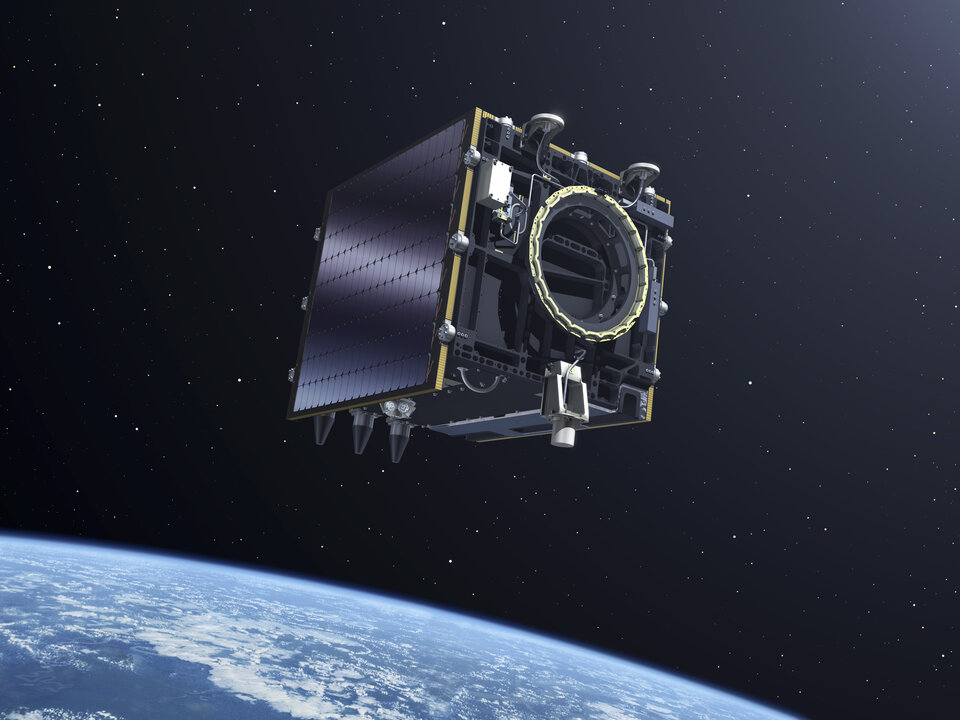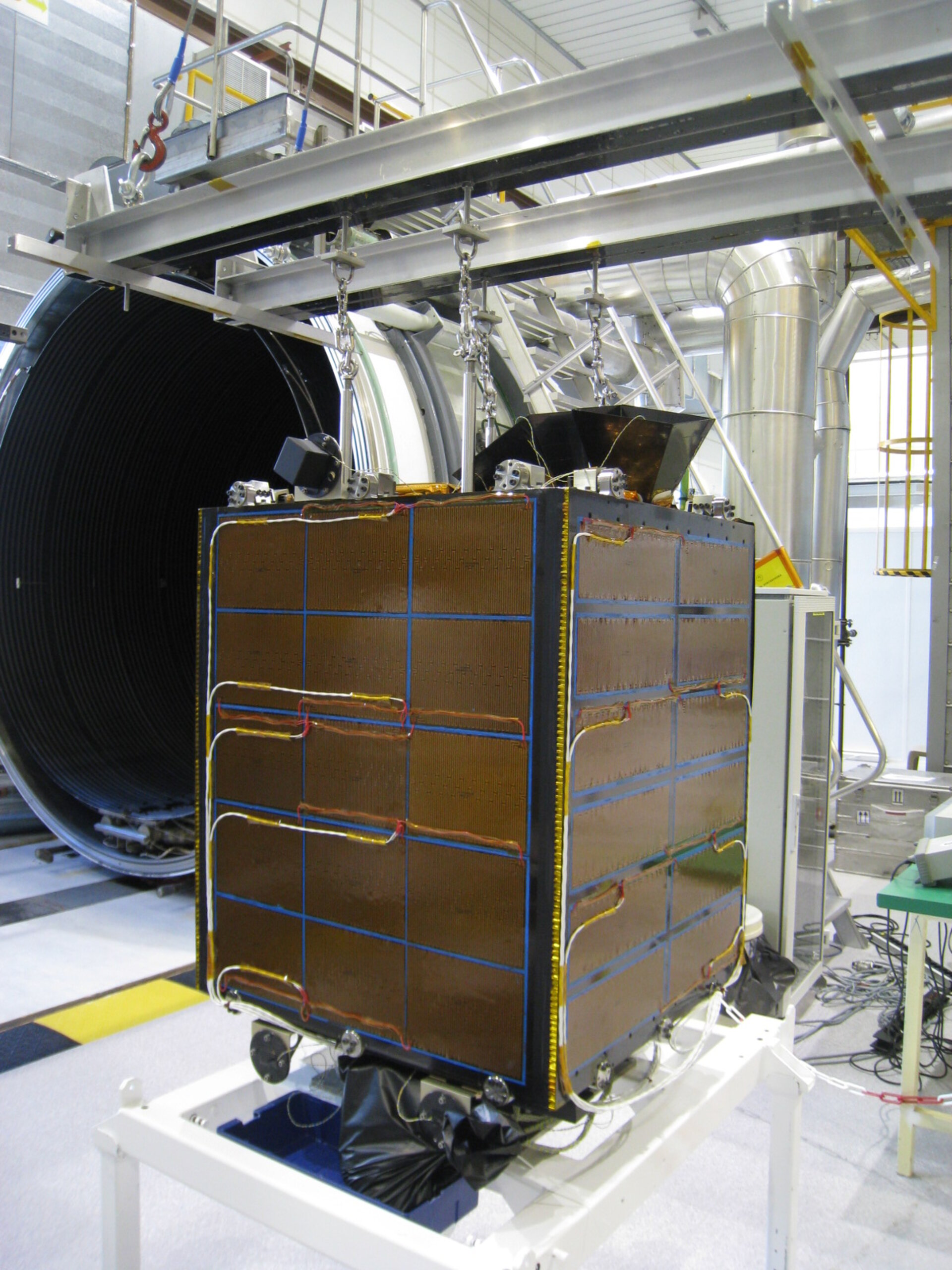Platform
Proba-V’s platform – otherwise known as its ‘bus’, the surrounding structure containing all necessary subsystems to let the payload do its work – takes its flight heritage from the Proba series of small satellites. The platform has been demonstrated in orbit by the Proba-1 and Proba-2 missions.
The underlying design is recurrent from Proba-2. It is box-shaped, with precise dimensions 765 x 730 x 840 mm3. The platform is based around a H-structure with structural panels made from aluminium and carbon fibre reinforced plastic (CFRP) material. Unlike Proba-2, which has deployable panels, Proba-V will have its solar array mounted onto its satellite body.

The satellite is three-axis stabilised, with an attitude and orbit control system inherited from Proba-2. incorporating a star tracker, GPS receivers, magnetometer and magneto-torquers.
In an significant upgrade from previous Proba missions, the star trackers - as well as the Vegetation instrument payload – have been placed on an optical bench to minimise temperature-driven structural deformation. Navigation and manoeuvres take place on a largely autonomous basis, with minimal input from the ground.
The satellite has a design lifetime of 2.5 years, and possesses total system redundancy to make it single-failure tolerant.


